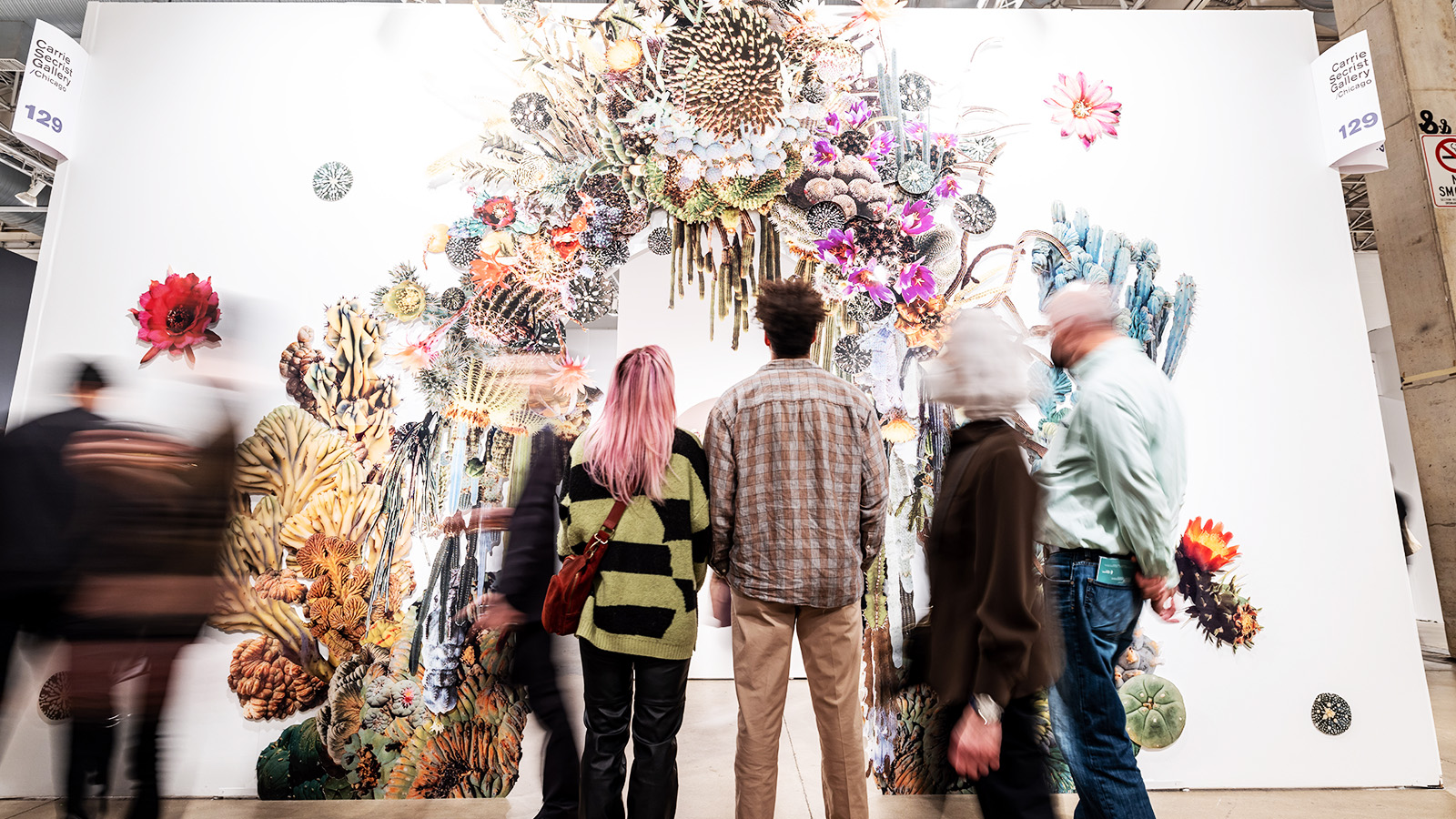Between April 7 and 10, EXPO Chicago hosted its ninth edition at the Chicago Navy Pier. Featuring booths from more than 140 international galleries, the art fair brought together a global community of art collectors, buyers, curators, museums, arts publications, and curious visitors.
In addition to gallery presentations, EXPO Chicago also hosted a number of panels and discussions, with topics ranging from NFTs to curation. Some of the panels included Collecting for Impact, which discussed the ethics of museum acquisition; Director’s Summit: Imagining the Future, which discussed a number of museum’s operational strategies; and Art Critics Forum: What is Art Criticism’s Job Today, which discussed how art critics are operating in a post-lockdown work environment.
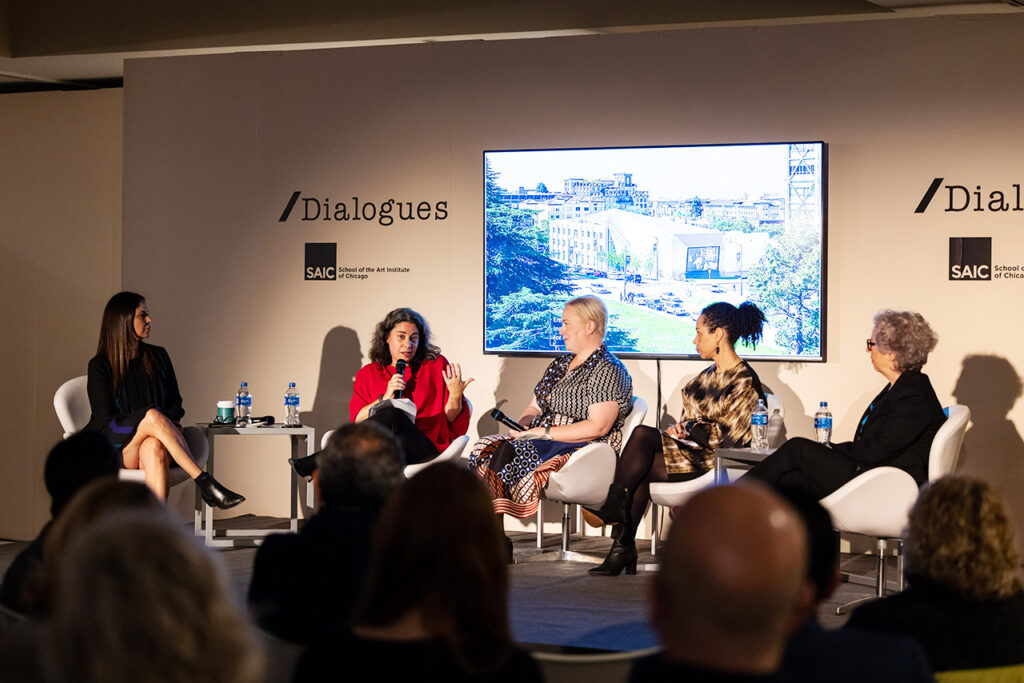
Panels at EXPO Chicago featured institutions including the Arizona State University Art Museum, the Honolulu Museum of Art, the Portland Art Museum, and the Whitney Museum of American Art. Image: Justin Barbin / courtesy of EXPO Chicago
Tony Karman, President of EXPO Chicago, says that the inaugural Director’s Summit and programming are key to the fair’s strategy. “In total, we welcomed more than 95 curators from around the world to the fair through our programming alone, and are proud to provide a platform for institutional dialogue and connectivity,” he tells Jing Culture and Commerce.
We’ve summarized three takeaways from the above panels, each tackling the key theme of community engagement and how institutions can better serve local audiences.
Consult with local communities
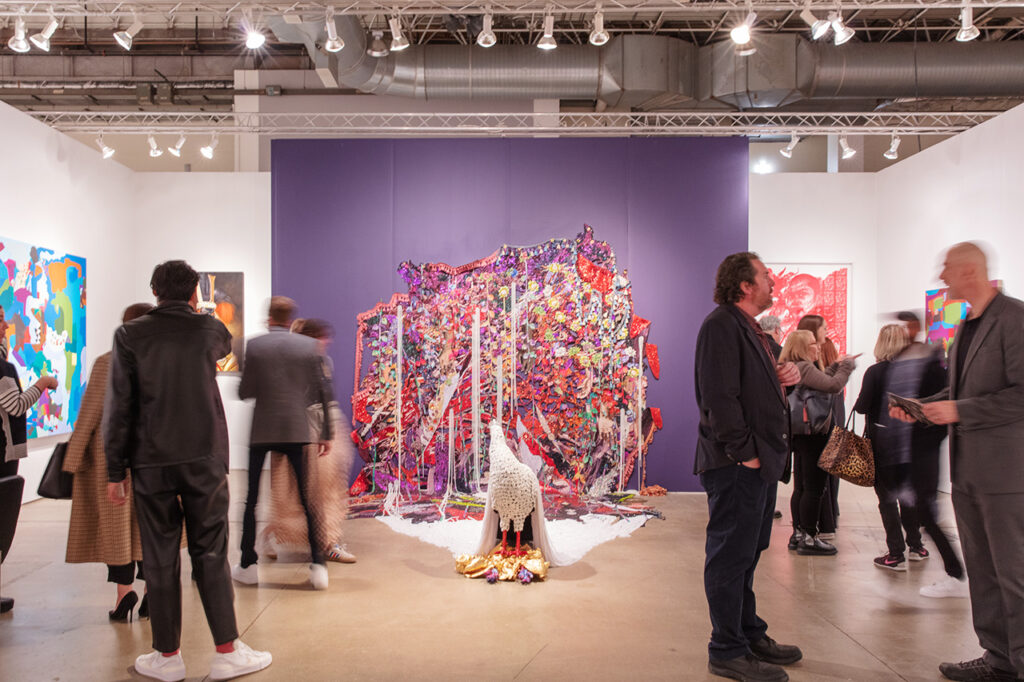
The art fair returned to Navy Pier after a two-year absence, with more than 140 galleries in participation. Image: Faith Kelsey / courtesy of EXPO Chicago
While museums often employ curators and staff well versed in art history and curatorial studies, museums often overlook their biggest knowledge base: local audiences.
During the Collecting For Impact panel, Miki Garcia, Director of the Arizona State University Art Museum, who also possesses a master’s degree in Latin American Art, reflected that museums do a poor job of allowing for diverse and different interpretations of exhibited art. One immediate action museums can take is to invite communities directly tied to exhibitions (for example, Chinese communities for Chinese exhibitions) to provide supplemental art placard information, lead in-depth visitor tours alongside curators, and form micro cultural advisory boards.
For example, Halona Norton-Westbrook, Director of the Honolulu Museum of Art, said she turned to the local community to gauge if the institution’s actions aligned with community needs. “We hosted a series of town halls of 10 to 12 people, intentionally inviting people who we knew did not agree with one another, people who were very supportive of our direction, and others who had questions about [where the museum was going].”
Reevaluate acquisitions
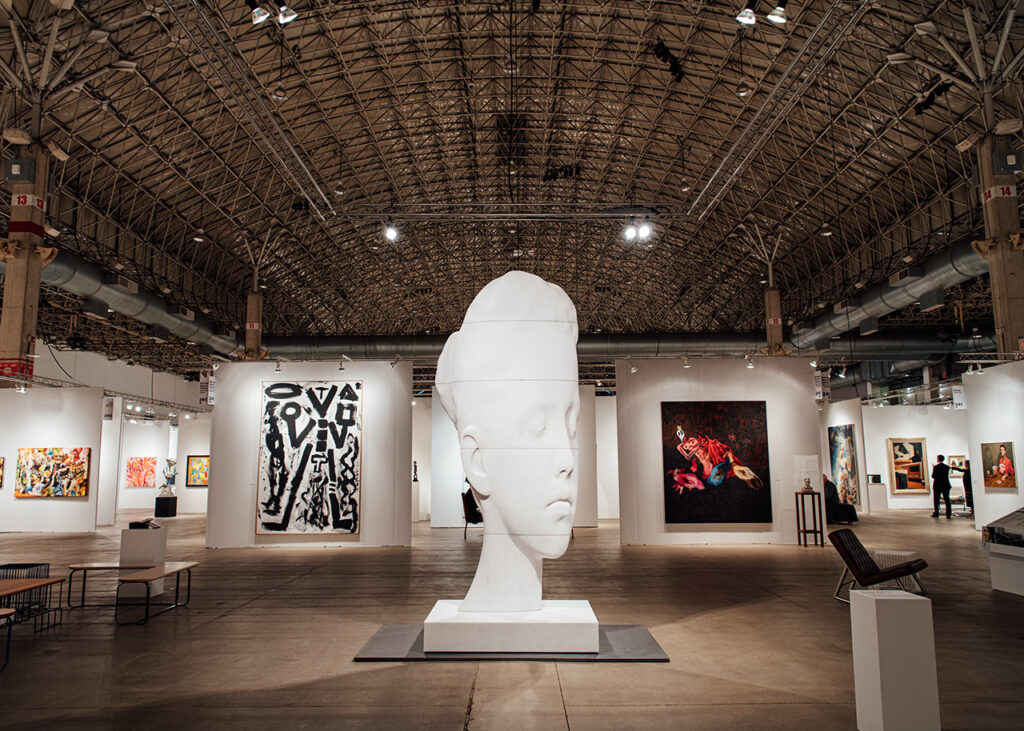
At the fair’s discussion panels, museum and cultural professionals tackled themes not limited to NFTs, curation, and community engagement. Image: Faith Kelsey / courtesy of EXPO Chicago
At the same panel, Garcia said the Arizona State University Art Museum recently redid its entire collecting and acquisition vetting process. Instead of simply collecting work for the sake of acquisition, the museums asked if the new pieces reflected the needs of local Arizonian communities.
“Is it representative of what Arizonans want to see and how it will work with disrupting certain collecting practices that we have?” she asked. She also said that if the museum doesn’t have the finances to care for an acquired work properly, that’s another problem. “We put a moratorium on acquiring any works for six months because we had such urgent storage issues,” she said.
Curator Sara Krajewski said the Modern and Contemporary Art at the Portland Art Museum has similar collecting mechanisms. “I’m not a very acquisitive curator, and I’m very interested in artists’ practices, supporting their work, and creating exhibitions,” she says. “So when I think about the criteria for acquiring works, I’m thinking, will [the acquisitions] connect audiences, and is it something we want to display?” Additionally, reevaluating acquisitions strategies puts less financial strain on museum budgets and allows for better care practices.
Expand archival access
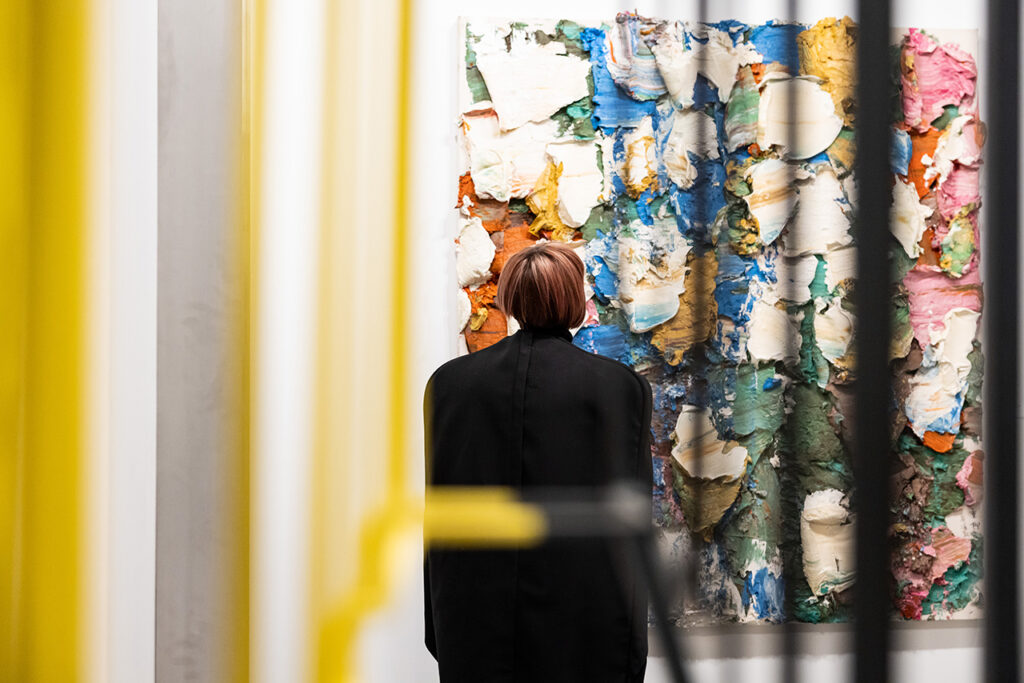
“We welcomed more than 95 curators from around the world to the fair through our programming alone, and are proud to provide a platform for institutional dialogue and connectivity,” says Tony Karman, President of EXPO Chicago. Image: Justin Barbin / courtesy of EXPO Chicago
While many museums already allow students and researchers to reference their archives, Krajewski believes these efforts can be doubled down on. “I’ve been thinking about open storage and allowing community members to come in and have access to things that may not be on view,” she said, noting that museums gave the public broader access to materials during the 19th and early 20th century, similar to libraries today.
ASU’s Ceramics Research Center also has an open storage practice, allowing visitors to see a piece’s creation process. “Many of our audiences will never go to the Louvre, the Met, or these art fairs,” Garcia said. “[Open space museums] are spaces for them to connect to the process of art-making.”
By embracing open space practices, museums can expand on their education efforts, deepening their engagement with all community members. And with the proliferation of digital archives, digital open spaces are also a venue to explore.
During the Directors Summit: Imagining the Future panel, Louise Bernard, Director at the Obama Presidential Center Museum, said a significant obstacle to access is that many people don’t feel connected to these institutions. “Once you intervene in programs and experiences that immediately resonate with the viewer, coupled with mindfully forging a sense of hospitality and a culture of belonging, then museums can begin building a connection that actively encourages repeat visitors,” she said.

